
In the realm of cinematic experiences, where narratives often adhere to predictable trajectories, an anomaly emerges with the raw, unfiltered intensity of a perfectly tuned high-performance machine. “Uncut Gems,” directed by the Safdie brothers, Josh and Benny Safdie, is precisely that—an intricate mechanism designed to plunge its audience into a world of relentless pressure and high-stakes gambles, fundamentally altering perceptions of a specific subculture and the human condition within it. This film doesn’t merely tell a story; it meticulously disassembles the very essence of obsession and consequence, offering an unabridged look at ambition’s consuming fire.
Much like a finely engineered automobile pushed to its limits, “Uncut Gems” operates on a level of detailed precision, where every character interaction, every camera movement, and every narrative beat serves a critical function. It’s an immersive deep dive into a world often glimpsed but rarely understood with such visceral authenticity. Our journey into this compelling universe will deconstruct the film’s foundational elements, revealing how its decade-long gestation, its complex protagonist, and its masterful casting converged to create a work of undeniable cinematic force and impact.
We embark on a thorough examination of this “uncut version,” not just as a film but as a profound statement on the inherent flaws and exhilarating highs of relentless pursuit. This analysis is crafted for enthusiasts who appreciate the intricate details, the underlying mechanics, and the sheer audacity of a production that dares to push boundaries, much like a concept car that redefines its category. Prepare to have your understanding of cinematic storytelling, character development, and immersive world-building recalibrated by the raw power of “Uncut Gems.”
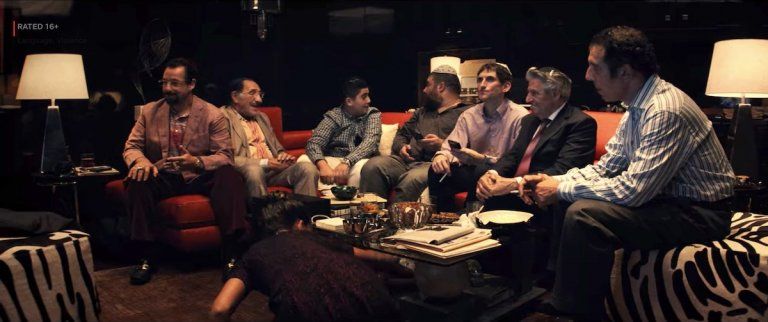
1. The Genesis of “Uncut Gems”: A Decade in the Making
The conceptualization of “Uncut Gems” was not an overnight spark of inspiration but rather a meticulous, decade-long evolution, a testament to the Safdie brothers’ commitment to their vision. The idea for a Diamond District movie first took root in 2009, drawing heavily from deeply personal experiences. Their father’s stories of working as a diamond salesman provided an authentic, foundational insight into this unique and high-pressure environment.
Co-writer Ronald Bronstein, who collaborated with the Safdies on the screenplay, brought a complementary perspective, having a similar background with his father working in the bustling Garment District. This shared heritage and understanding of the working-class, hustling mentality ingrained in New York’s specific commercial enclaves were crucial. It allowed the creative team to craft a narrative that felt inherently real, lived-in, and deeply rooted in its setting, moving beyond superficial portrayals to capture the true grit and character of the district.
The extended development period, stretching from 2009 until filming commenced in 2018, enabled the Safdies and Bronstein to refine the screenplay with exceptional detail and nuance. This prolonged gestation ensured that the narrative was not just compelling but also complex, allowing for the intricate layering of character motivations and plot points that define the final film. It’s a prime example of how dedication to development can yield a robust and resonant cinematic achievement.
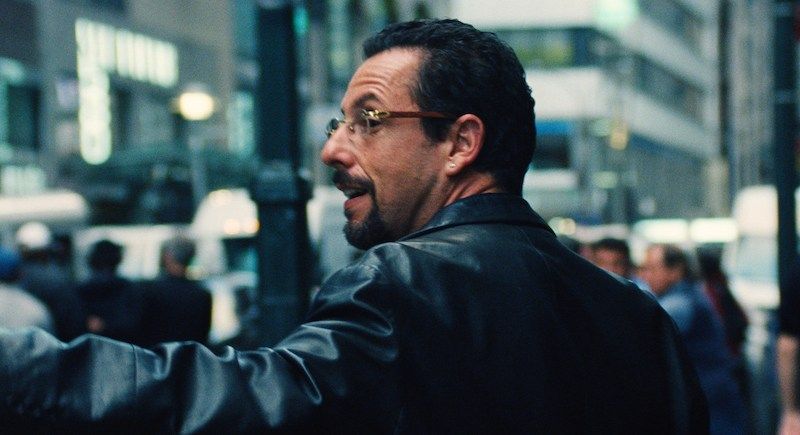
2. Howard Ratner: The Architect of Anxiety and Ambition
Central to the narrative’s propulsive energy is Howard Ratner, a character meticulously constructed to embody a potent cocktail of anxiety, ambition, and an almost pathological optimism. The Safdie brothers drew extensively from Jewish humor and iconic 20th-century actors in shaping Howard, deliberately imbuing him with traits often associated with stock Jewish characters like the “schlimazel” or “schlemiel.” While some argued against the latter comparison due to Howard’s shamelessness, the essence of a luckless or inept protagonist permeates his journey.
Crucially, the Safdies envisioned Howard as someone who embraced these stereotypes, treating them not as weaknesses but as a “superpower.” Their intent was to present a “strong guy who doesn’t back down,” highlighting the resilience and defiant spirit within him. This approach served a deeper purpose, as Josh Safdie articulated, to prove “that people can look beyond a flaw… That’s why the movie is called ‘Uncut Gems.’ Uncut gems are rough things that are considered ugly by most people, but when you scope them out and get underneath you can find the beauty and value in them.”
Howard’s character arc is also deeply informed by the Jewish concept of “learning through suffering,” a theme that underpins his continuous tribulations. He represents an intriguing blend of “insecurity plus power,” possessing enough societal access due to his perceived “whiteness” while simultaneously driven by an “immigrant hustler mentality.” This dual nature makes him a compelling, if exasperating, figure, constantly navigating the treacherous waters between potential triumph and inevitable disaster, driven by an emotional need for the “next big score.” His journey is a raw, unvarnished exploration of how deeply ingrained cultural and personal pressures can fuel an unyielding pursuit of status and success.

3. Adam Sandler’s Transformative Performance
Adam Sandler’s portrayal of Howard Ratner in “Uncut Gems” has been universally acclaimed as the definitive performance of his career, a dramatic turn that surprised many but was, in fact, the culmination of a long-standing pursuit by the Safdie brothers. Initially, Sandler was approached for the role as early as 2010 and again in 2015, but his manager reportedly rejected the script without Sandler ever seeing it, missing early opportunities for this career-defining role.
The turning point arrived when Martin Scorsese agreed to executive produce the film, lending significant credibility that piqued the interest of more serious actors. Eventually, after seeing the Safdies’ intense crime thriller “Good Time,” Sandler recognized their unique directorial vision and finally committed to playing Howard in April 2018. This decision proved to be a masterstroke, as Sandler fully immersed himself in the character, delivering a performance of unparalleled intensity and vulnerability.
Critics lauded Sandler, with many commentators calling it the best of his career, an assertion echoed across numerous reviews. Todd McCarthy of The Hollywood Reporter articulated this sentiment, noting that “Many will agree that this is Sandler’s best performance, and the Safdies will finally move from the fringes of the commercial film scene to somewhere closer to the center.” This led to significant buzz for an Academy Award for Best Actor nomination, though he was ultimately not nominated. Sandler, in typical fashion, joked about the outcome on The Howard Stern Show, stating that if he didn’t win an Oscar, he’d make the “worst movie ever… so bad on purpose just to make you all pay,” a humorous acknowledgment of the widespread recognition his dramatic work had garnered.
Read more about: Remember the ’90s? These 12 Comedy Icons Had Us Absolutely ROLLING and Are Still Crushing It Today!

4. The Opal: A Catalyst for Chaos and Obsession
At the heart of “Uncut Gems” lies the magnificent, yet cursed, 600-carat black opal, a physical manifestation of Howard Ratner’s unbridled ambition and the ultimate catalyst for the film’s spiraling chaos. This rare gemstone, smuggled from Ethiopia’s Welo mine, is not merely a piece of jewelry; it is Howard’s personal white whale, an object of immense, almost mystical, significance around which his entire precarious world revolves. Its acquisition, financed by a $100,000 loan from his menacing brother-in-law Arno, sets in motion the relentless series of events that define the film.
The opal’s power to mesmerize is immediately apparent upon its arrival at KMH, Howard’s jewelry store. When basketball star Kevin Garnett sees it, he becomes utterly enamored, believing it will bring him good luck for his crucial playoff game that night. This fascination transforms the opal from a mere commodity into a psychological anchor, a tangible symbol of fortune and desire that everyone wants to possess. Howard, blinded by his own belief in its million-dollar auction potential, repeatedly misjudges its hold on others and its influence on his own fate.
Its journey through the film — from Howard’s desperate acquisition to Garnett’s temporary possession, through the botched auction, and ultimately to its high-stakes sale — underscores its role as more than just a plot device. The opal embodies the intoxicating allure of the “next big score,” a tangible representation of Howard’s emotional need to chase a transformative win. It is the raw, uncut gem that promises immense value but delivers only escalating tension and profound personal and financial jeopardy, consistently defying conventional valuation and fueling Howard’s destructive obsession.

5. The Relentless Pursuit: Howard’s Gambling Addiction
Howard Ratner’s gambling addiction is not merely a character trait; it is the fundamental driving force behind every decision, every desperate maneuver, and ultimately, his tragic fate in “Uncut Gems.” His “habits are even more expensive” than his well-paying job, illustrating a deep-seated compulsion that overrides logic and self-preservation. From the moment he pawns Kevin Garnett’s 2008 NBA Championship ring to fund a colossal six-way parlay, the audience is plunged into the visceral reality of his addiction.
This specific bet, worth $600,000, hinges on multiple outcomes related to Garnett’s performance, including winning the opening tip-off, the Celtics leading at halftime, winning the game, and Garnett exceeding projections for points, rebounds, and blocks. As Anthony Schneck of Thrillist quipped, “including the opening tip in any parlay signifies gambling addiction in the same way that having a baby signifies you were pregnant.” This intricate, highly speculative wager showcases the extreme lengths to which Howard’s addiction propels him, transforming every moment of a basketball game into a nerve-shredding, personal referendum on his future.
Despite the mounting debts, the threats from loan sharks like Arno, and the clear warnings, Howard remains enslaved by an “emotional need to chase the next big score.” This cyclical pattern of winning, losing, and immediately reinvesting in even riskier bets defines his existence. Even after Garnett pays him $165,000 for the opal, Howard instantly gambles the entire sum on yet another speculative parlay. His addiction is portrayed as an all-consuming force, a relentless pursuit of fortune that blinds him to reason and ultimately leads to his undoing, highlighting the devastating grip of such compulsions.
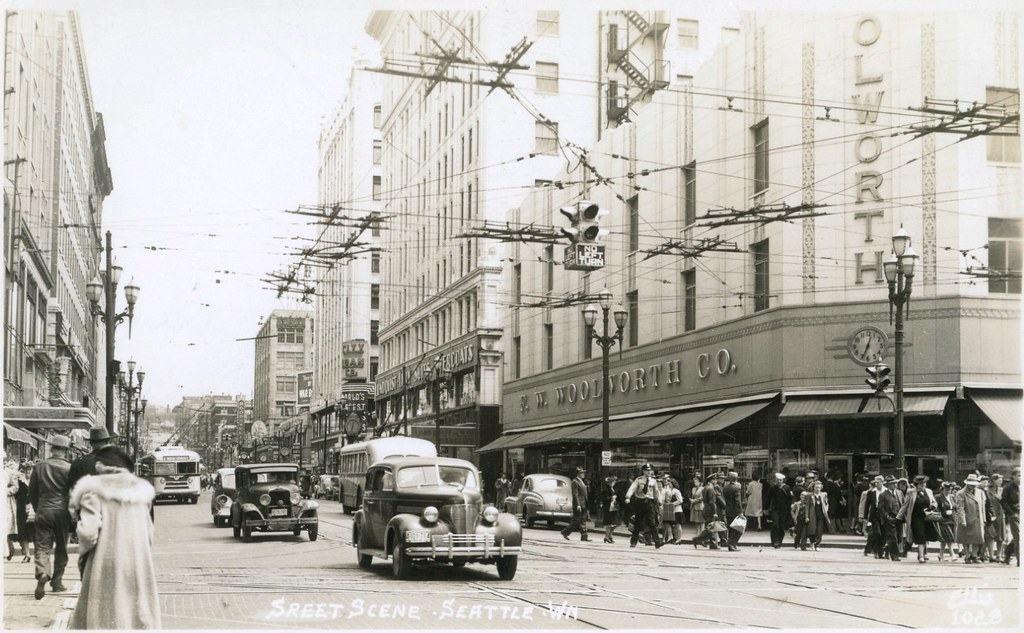
6. The High Stakes World of the Diamond District
“Uncut Gems” is not just a character study; it is also a meticulously crafted portrait of New York City’s Diamond District, a high-pressure ecosystem brought to life with remarkable authenticity. The Safdie brothers, drawing from their familial insights, managed to capture the industry’s unique atmosphere, its frenetic energy, and the palpable tension that permeates its dealings. This commitment to verisimilitude resonated deeply with real-life Diamond District workers, who praised the film for its accurate portrayal of their world.
These industry insiders noted the film’s ability to convey the high-stress environment, the intense negotiations, and the constant hustle intrinsic to the trade. However, they also acknowledged that certain aspects of Howard’s character were exaggerated for dramatic effect, such as his extreme gambling addiction, his exorbitant debts, and his audacious willingness to circumvent anti-smuggling laws. These embellishments, while enhancing the film’s narrative drive, did not detract from the overall fidelity of its setting.
The film goes beyond mere aesthetics, showcasing the complex social dynamics and interconnectedness of the district. The casting of several real-life industry figures in cameo roles further cemented its authenticity, blurring the lines between fiction and reality. This attention to detail ensured that the Diamond District became more than just a backdrop; it functioned as a character in itself, a vibrant, volatile world that shapes and is shaped by the relentless ambitions of individuals like Howard Ratner. The film provides an “uncut” glimpse into a specialized trade, revealing its unique rhythm and inherent risks.
Read more about: Kamala Harris: A Comprehensive Review of Her Defining Political Hurdles and Encounters with Security Challenges
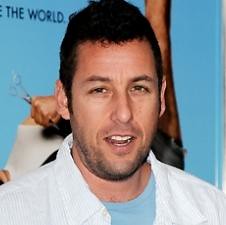
7. Casting the Ensemble: From Basketball Stars to Breakout Talents
The casting process for “Uncut Gems” was as complex and high-stakes as the film’s plot, ultimately yielding an ensemble that delivered exceptional performances, blurring the lines between professional acting and authentic portrayal. Beyond Adam Sandler’s transformative lead, the choices for supporting roles, particularly for the pivotal basketball player, were meticulously considered and widely praised.
The role of the basketball player, which ultimately went to Kevin Garnett, involved a thorough search among NBA legends. Initially, the Safdies had Kobe Bryant in mind, even structuring the game around the day he broke the Madison Square Garden single-game scoring record. However, Bryant’s agent indicated his interest lay solely in directing. Amar’e Stoudemire was also considered due to his joint Black and Jewish heritage and his New York Knicks history, a team beloved by the Safdies. Stoudemire, however, declined to shave his head for the role. Joel Embiid briefly agreed but had to withdraw due to the filming schedule conflicting with the basketball season. The Safdies then pivoted to retired players, settling on Garnett, despite the historic rivalry between his Celtics and the Knicks, securing a performance that critics lauded as one of the best by an athlete ever.
Equally compelling was the casting of Julia Fox as Julia De Fiore, Howard’s employee and mistress. Three hundred actresses reportedly auditioned for the role, with prominent names like Lady Gaga, Jennifer Lawrence, Scarlett Johansson, and Kim Kardashian being discussed. However, the role ultimately went to Fox, who delivered a breakout performance that captivated audiences. The Weeknd also made an appearance as himself, specifically requesting to portray an “egotistical punk,” a characterization he admitted reflected his own demeanor in 2012. These deliberate and often unexpected casting choices contributed significantly to the film’s raw energy and undeniable realism, cementing its status as a masterclass in ensemble construction.

8. The Safdie Brothers’ Distinct Directorial Vision and Immersive Aesthetic
The Safdie brothers, Josh and Benny, engineered “Uncut Gems” as an all-encompassing sensory experience, meticulously crafting a cinematic world mirroring its protagonist’s relentless pressure. Their directorial vision commits to unflinching verisimilitude and pathological attention to detail. This transforms the screen into a pulsating, high-stakes environment, ensuring every frame contributes to the film’s theme of intense anxiety.
Their cinematography, primarily 35 mm film with vintage anamorphic lenses, was deliberate. This blend created a grainy, visceral texture, enhancing the Diamond District’s gritty realism. Night sequences used Arri Alexa Mini but maintained the aesthetic through consistent lens application, upholding their signature visual language.
The aesthetic extends to narrative structure and character environments. Production designer Sam Lisenco crafted Howard’s world as a “new-money striver” with “trashy tastes.” Elements like a Sony Trinitron, floor-to-ceiling mirrors, and large fish tanks contributed to “tacky midtownish entropy,” as noted by Katie Baker.
This meticulous construction immerses the audience in Howard’s anxiety. David Klion argued that the film’s “overriding effect… is one of intense anxiety, which feels like a very Jewish theme.” The Safdies’ control ensures this anxiety is not just observed but viscerally felt, making the audience a passenger in Howard’s accelerating vehicle of self-destruction.

9. Profound Jewish Cultural Themes and Identity
“Uncut Gems” is deeply rooted in profound Jewish cultural themes and a nuanced exploration of identity, a deliberate choice by the Safdie brothers. Their shared Jewish upbringing was “essential to their crafting of the film,” influencing Howard and the underlying philosophical currents. The film is “about belonging” but also “about cheating God,” hinting at a complex interplay of faith, fate, and ambition.
Howard Ratner is a meticulously engineered construct of Jewish archetypes, influenced by humor and 20th-century actors. Likened to a “schlimazel” (poor luck) or “schlemiel” (ineptitude), though his “shamelessness precludes” the latter. The Safdies intended for Howard to embrace these “stereotypes proudly,” transforming them into a “superpower,” proving “people can look beyond a flaw.”
A central tenet for Howard is “learning through suffering,” a thematic anchor underpinning his tribulations. This constant anxiety is inherent to his Jewish experience, embodying “insecurity plus power.” His Jewishness grants “whiteness to have access,” yet imbues him with an “immigrant hustler mentality,” driving him to pursue status through “material consumption.”
The Safdies designed Howard’s character to channel “Jewish ‘stereotypes forced onto us in the Middle Ages… when… Jews’ only way of accruing status… was through material consumption.'” This reveals his pursuit of wealth not just as a personal flaw but a cultural response. The film presents Howard as a “working-class Jew, the desperate Jew,” challenging assumptions about Jewish identity.
Read more about: From Ancient Roots to Modern Resonances: Unpacking the Enduring Legacy of the Name Rachael

10. The Film’s Unique Sound Design and Original Score
The sonic landscape of “Uncut Gems” is as intricately crafted and immersive as its visuals, a critical component in the film’s high-octane, anxiety-inducing machinery. Daniel Lopatin, Oneohtrix Point Never, composed the acclaimed original score. His musical architecture provides a constant undercurrent of tension, like a finely tuned engine signaling acceleration.
Jon Caramanica of The New York Times vividly described the auditory experience: “no opportunity for sonic escape… a film that often sounds like it is itself taking in three movies at once.” This encapsulates the overwhelming, multi-layered sound design. Auditory components actively heighten the audience’s sense of being perpetually overwhelmed.
The “thrum of the thing is massive, varied and thick,” encompassing “the noise of the city, a paranoid score, and sometimes you even hear the dialogue.” This layering creates frantic realism, simulating Howard’s sensory overload. Multiple pressures constantly vie for attention, forcing the audience into heightened awareness.
Lopatin’s score, released as a standalone album, solidified its impact. Though songs with The Weeknd went unused, his influence extended to The Weeknd’s *After Hours*. This demonstrates Lopatin’s profound sonic fingerprint, proving the score a structural pillar of “Uncut Gems”‘s immersive aesthetic.
Read more about: Beyond the Script: Unpacking the Improvised Brilliance of ‘Pulp Fiction’s’ Legendary Dance-Off

11. Box Office Triumph and A24’s Record-Breaking Success
“Uncut Gems” achieved significant commercial success, marking several record-breaking milestones for A24. Its journey from limited to nationwide release showcased a meticulously managed distribution strategy. The film’s box office performance underscored its broad appeal, despite its niche, high-tension subject matter.
During its initial limited release, the film garnered $537,242 from five theaters. This $107,448 per-venue average was the highest ever for A24 and second-best of any 2019 film. This concentrated success provided a powerful launchpad, generating buzz and proving commercial viability.
The film capitalized on this momentum for its wide release during Christmas. On the first day, including previews, “Uncut Gems” accumulated $5.9 million, A24’s highest single-day gross. The five-day holiday weekend brought in $18.5 million total, securing a sixth-place finish.
“Uncut Gems” continued robust performance, earning $7.5 million in its second wide weekend. By its theatrical run’s end, the film amassed $50 million domestically. This positioned it as A24’s highest-grossing film domestically until surpassed by “Everything Everywhere All at Once” in May 2022.
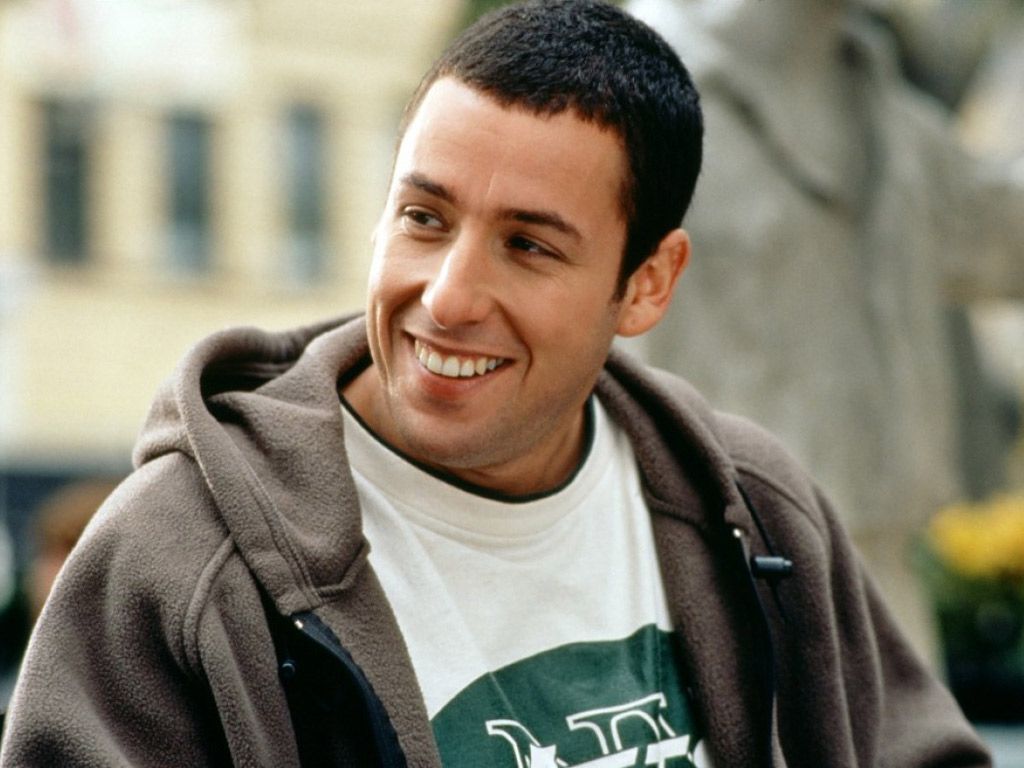
12. Universal Critical Acclaim and Adam Sandler’s Career-Defining Performance
“Uncut Gems” was met with “universal acclaim,” a testament to the Safdie brothers’ masterful direction and Adam Sandler’s “against-type performance.” Many hailed it as his definitive portrayal. This critical consensus underscored the film’s powerful impact and its ability to transcend genre expectations.
The film’s reception was overwhelmingly positive. On Rotten Tomatoes, it holds a 91% approval (351 reviews, 8.4/10 average). The consensus: “‘Uncut Gems’ reaffirms the Safdies as masters of anxiety-inducing cinema—and proves Adam Sandler remains a formidable dramatic actor when given the right material.” Metacritic assigned a 93/100, indicating “universal acclaim.”
Central to this adoration was Sandler’s portrayal of Howard Ratner, lauded as the “best of his career.” Todd McCarthy of The Hollywood Reporter noted, “Many will agree that this is Sandler’s best performance, and the Safdies will finally move from the fringes… closer to the center.” This ignited significant buzz for an Academy Award nomination.
Despite no Oscar nod, Sandler’s dramatic work garnered widespread recognition. He humorously remarked on The Howard Stern Show about making the “worst movie ever” if he didn’t win. Critics praised execution: Eric Kohn called it “a riveting high-wire act,” Justin Chang, “a thriller and a character study, a tragedy and a blast.”
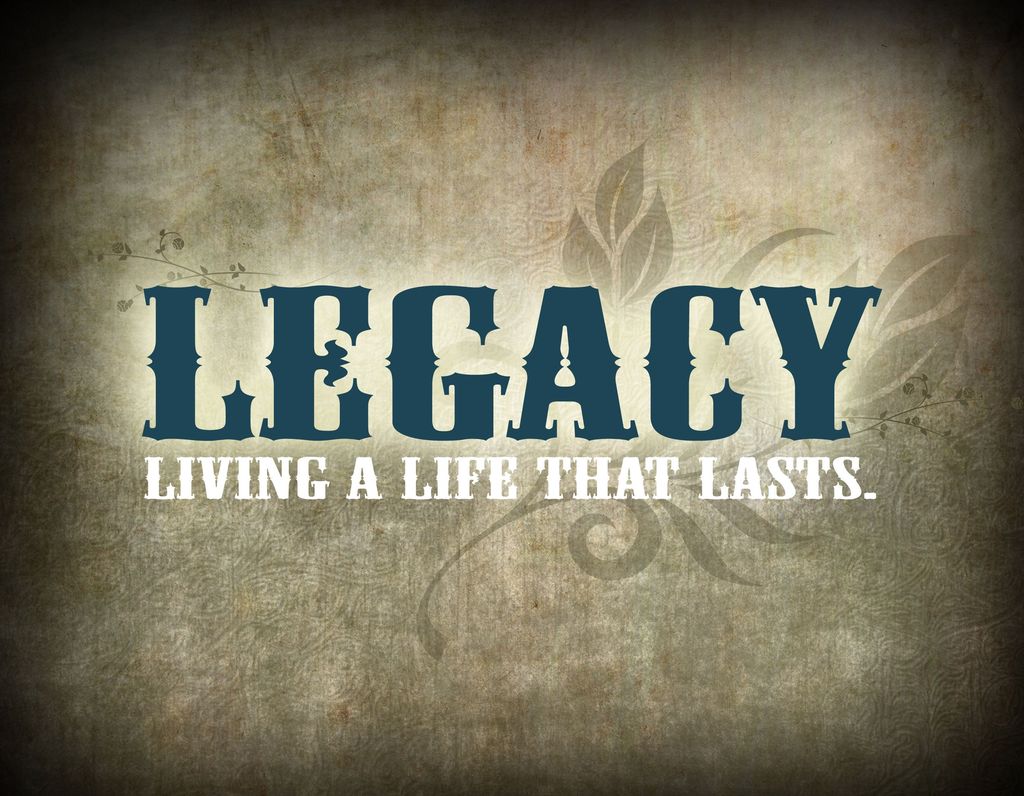
13. Enduring Legacy and Impact on 21st-Century Cinema
“Uncut Gems” swiftly cemented its status as a significant cultural touchstone, profoundly influencing contemporary cinema and solidifying its place among the best films of the 21st century. Its relentless pace, authentic world-building, and high-wire tension left an indelible mark, redefining expectations for expert-driven storytelling.
The film’s acclaim led to its inclusion on prestigious lists. The A.V. Club ranked it 92nd-best film of the 2010s. The New York Times featured it at number 58 on “The 100 Best Movies of the 21st Century,” and number 72 on “Readers’ Choice.” Rolling Stone placed it at number 75, underscoring its broad critical and popular resonance.
Beyond accolades, “Uncut Gems” tangibly influenced visual language, notably for Pixar’s “Inside Out 2.” This highlights the film’s innovative technical and stylistic elements. The Safdies’ work influenced framing for Anxiety’s scenes, showcasing its immersive aesthetic as a reference point for vastly different genres.
Its “verisimilitude” resonated within the Diamond District. Workers lauded “Uncut Gems” for its “accurate portrayal of the industry and the high-stress setting,” validating the Safdies’ meticulous research. Insiders praised its capture of the trade’s “unique rhythm and inherent risks,” with real-life figures in cameos blurring fiction and reality.
Read more about: Beyond the Limelight: 15 Celebrities Who Bravely Served in the Vietnam War

14. The Safdie Brothers’ Partnership Dissolution and Future Endeavors
“Uncut Gems” stands as a monumental capstone in the collaborative career of Josh and Benny Safdie, their final feature film before officially dissolving their partnership in 2024. This cinematic high-water mark brought an era of distinctive filmmaking to a close, like a perfectly executed final lap on a challenging race circuit.
Despite the formal dissolution, the brothers briefly collaborated on “Goldman v. Silverman” (2020) with Adam Sandler. A planned Sandler-starring follow-up feature saw Benny drop out, signaling their evolving dynamic. Benny emphasized Josh would continue, with his pre-production contributions being minimal, highlighting an amicable separation.
Following the split, both Safdie brothers channeled talents into new, independent projects. Josh pivoted to “Marty Supreme,” reportedly starring Timothée Chalamet, signaling continued engagement with high-profile talent. Concurrently, he shot a Netflix comedy special with Adam Sandler, underscoring their strong artistic bond from “Uncut Gems.”
Benny Safdie also embarked on individual artistic ventures. The dissolution marks the end of a prolific, critically celebrated collaboration. “Uncut Gems” serves not only as a powerful standalone film but a definitive closing chapter, an “uncut” record of a partnership before its evolution into separate, promising paths.
As we conclude our extensive exploration of “Uncut Gems,” it’s clear the film is far more than a frenetic crime thriller; it is a masterclass in cinematic engineering. Meticulously designed to engage, provoke, and immerse, every element operates with the precision of a high-performance machine. From its deep-rooted cultural themes to its record-breaking box office run and enduring legacy, the Safdie brothers crafted a narrative that, much like an “uncut gem,” reveals profound beauty and value beneath its rough, anxious exterior, recalibrating our expectations for bold, expert-driven storytelling. Its impact continues to resonate, proving that when every component is perfectly tuned, a film can achieve truly transformative power.



